Calibration of a Pressure GaugeThe apparatus is a Bourdon gauge connected to a dead weight tester. The Bourdon gauge has a transparent dial that allows students to see the working mechanism To calibrate the gauge, students add weights to a platform on a dead weight tester. The weights put a known force on to a piston. The piston has a known area, so students can calculate the pressure. | 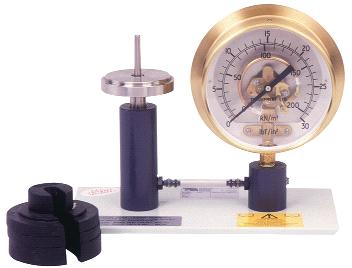 |
Flow Visualization ApparatusThis experimental unit of simple construction is used to demonstrate flow lines and flow fields in a plane. In a flow bath, in which the flow area is illuminated from the side, a flow of water is generated using a circulating pump. Hydrogen bubbles form electrochemically on a platinum wire cathode. Three anodes with cathodes of different length and numerous drag bodies, which are placed in the stream of bubbles, are provided for performing the experiments. |  |
Impact of JetThe Impact of a Jet apparatus shows students the force produced by a jet of water as it strikes a flat plate or hemispherical cup. They can then compare this to the momentum flow rate in the jet. | 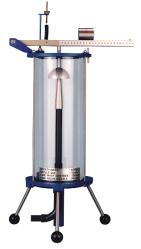 |
Friction in Pipes and FittingsThe panel comprises a pipe network with sub-sections that can be isolated individually and one measurement section in which different elements can be inserted. There are 4 water manometers for pressure measurements. The pipe network is made of plastic. Annular chambers enable pressures to be measured with minimum interaction. The water supply and flow rate measurements are provided by the HM 150. | 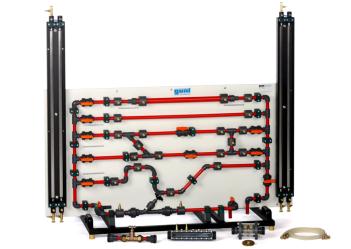 |
Flowmeter Measurement ApparatusFlow Measurement apparatus shows the typical methods of measuring the flow of an essentially incompressible fluid (water). It also shows applications of Bernoulli’s equation. Students measure flow using a Venturi meter, an orifice plate meter and a rotameter. Bernoulli’s equation works for each meter. Students find and compare the head losses associated with each meter, as well as those arising in a rapid enlargement and a 90-degree elbow. | 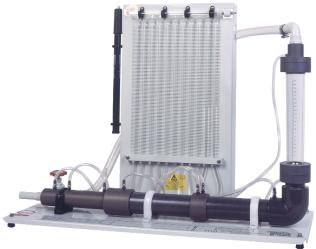 |
Friction Losses in BendsThe following typical pipe fittings are incorporated for study: mitre bend, 900 elbow, sweep bends (large and small radius), sudden contraction and sudden enlargement. All are instrumented with upstream and downstream pressure tappings. These tappings are connected to a bank of twelve water manometer tubes, mounted on the framework | 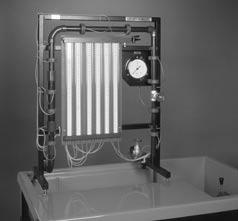 |
Friction Loss in Pipes ApparatusThe Friction Loss in a Pipe apparatus allows students to measure the change in the laws of resistance for laminar to turbulent flow. They then find the critical Reynolds number. The apparatus shows clearly the flow transition point, and is ideal for demonstrations as well as student experiments | 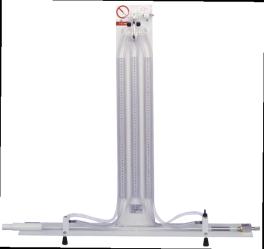 |
Pipe Surge ApparatusPipe surge and water hammer are two related but independent phenomena which arise when fluid flowing in a pipe is accelerated or decelerated. The equipment designed by Armfield clearly demonstrates the different effects resulting from gradual or instantaneous changes in fluid velocity (created by slow and fast valve closure). Effect of initial fluid velocity can also be investigated. |  |
Flow Through an OrificeTecQuipment’s Flow through an Orifice apparatus allows students to measure: Decrease in flow, Contraction of the stream, Energy loss. They find these measurements as water leaves an orifice. Students can also use the apparatus to study different shapes of orifice. | 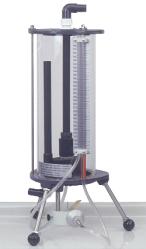 |
Hydrostatic BenchThe Armfield Properties of Fluids and Hydrostatics Bench is designed to demonstrate the properties of fluids and their behaviour under hydrostatic conditions (fluid at rest). This allows students to develop an understanding and knowledge of a wide range of fundamental principles and techniques, before studying fluids in motion. | 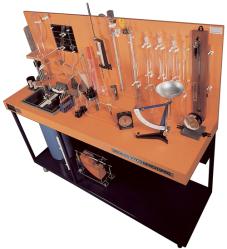 |
Vortex ApparatusThe TecQuipment Vortex Apparatus enables students to produce both free and forced vortices, and measure the vortex water surface profile. | 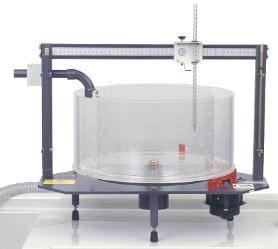 |
Flow Over Notches and WeirsThe Discharge over a Notch apparatus shows clearly the use of weirs as simple flow regulators It allows students to do tests on relationships between upstream water level and weir discharge for various different shaped notches. They can then compare their results with theory. | 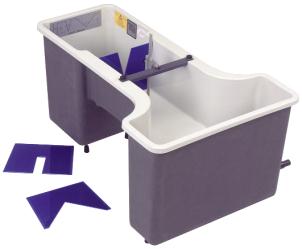 |
Centrifugal PumpA small-scale centrifugal pump demonstration unit, comprising of a water reservoir, the pump, control valves and interconnecting pipework all mounted on a stainless steel base. Equipped with electronic measurement sensors for pump head pressure, suction, flow-rate and water temperature. | 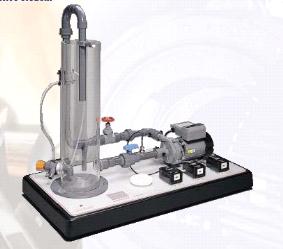 |